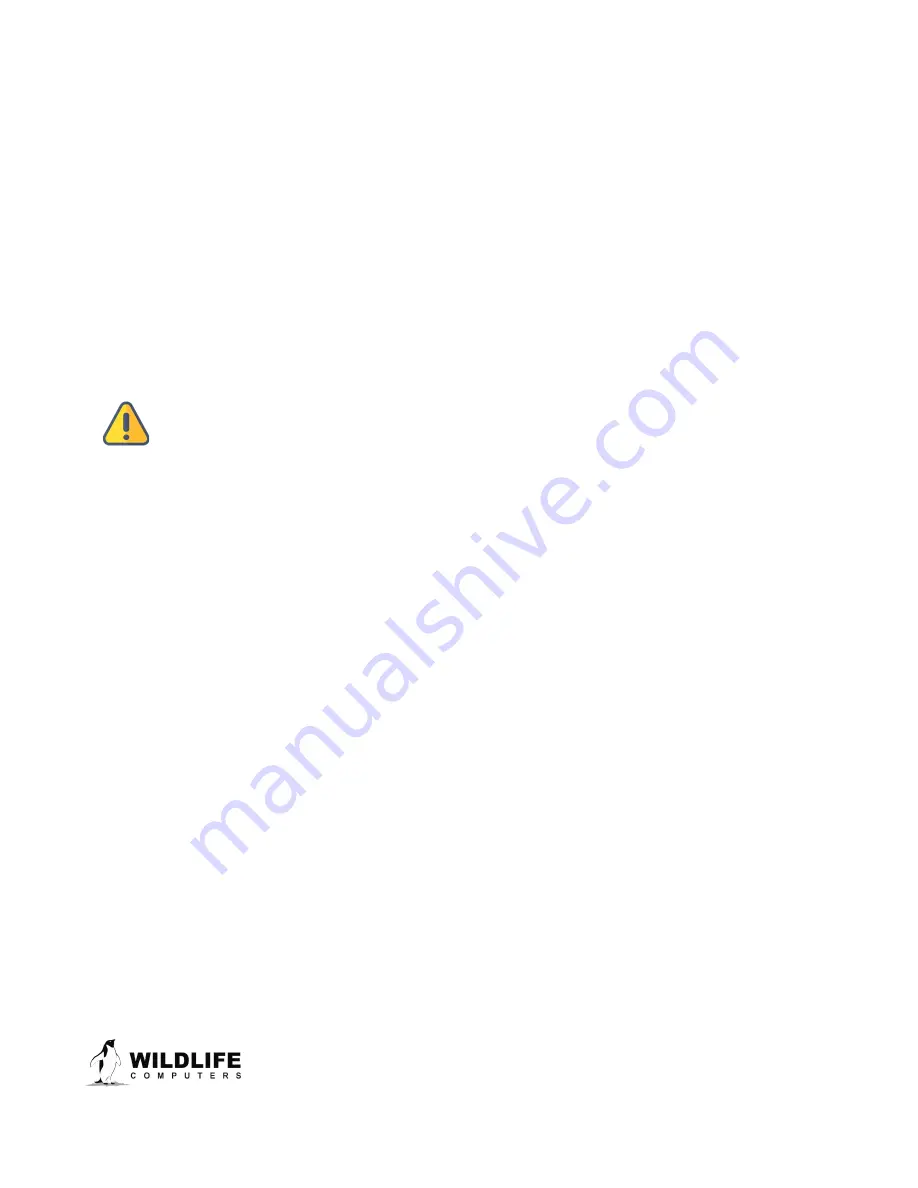
Page 5
The information contained in these documents is confidential, privileged and only for the information of the intended recipient and
may not be used, published or redistributed without the prior written consent of Wildlife Computers.
Tags are shipped and stored at half capacity so we suggest giving them a boost charge initially via USB
using the USB communications cable supplied in your shipment, especially if they have been in
storage out of the sunlight. Each tag may take up to 90 minutes to charge depending on its battery
state at the start of charging. It does not matter if you plug the USB via a computer connection or
through a wall plug. Battery charging is fully automatic and it is impossible to overcharge or damage
the battery through USB or solar charging.
1.
With the magnet holder on the tag, plug the USB connector end into the communications
port of the tag. Take care to ensure the pins in the tag align exactly with the recesses in the
charging end of the USB. There is only one orientation of the connector that will work. Look at
the communications port on the tag and you will see three pins in a row, a space, and then a
fourth pin. You will see the same configuration in the recess of the USB cable.
If the pins and connector are not aligned correctly and you apply force as you insert the
charger, you may bend and damage a pin.
2.
A blue LED lights up on the tag when you insert the charger. When fully charged, the blue LED
extinguishes, this takes up to 90 minutes per tag. You can charge with the magnet cover on or
off, but if its off, don’t forget to replace the magnet cover as soon as complete if you are
indoors.
3.
Once fully charged, you need to test the tag. Remove the magnet cover outdoors and leave in
clear view of the sky with the solar panels exposed to the sun.
4.
When you remove the magnet cover, the tag will be in Start mode and a red LED will flash
giving you visual feedback of the tag status. The sequence is 10 rapid flashes followed by an
extended blink then off (about four or five seconds max).
5.
If you are testing multiple tags they should be separated by a short distance with their
antennas in as much free space as possible. The antennas are naturally droopy, a characteristic
of the antenna material. They will tend to droop more in colder weather.
6.
It can take several hours for Argos transmissions to be downloaded, processed, and displayed
in your Wildlife Computers Data Portal (portal) account.
7.
Once you are satisfied with the data received and happy the tags are functioning as required,
put the tag in Stop mode by replacing the magnet cover. The visual feedback from the red
LED is two quick flashes, a pause, two flashes, a pause, two flashes (about six seconds in total).
8.
If you are not deploying the tags immediately, please leave in Stop mode with the magnet
covers in place to maintain an adequate charge.
























